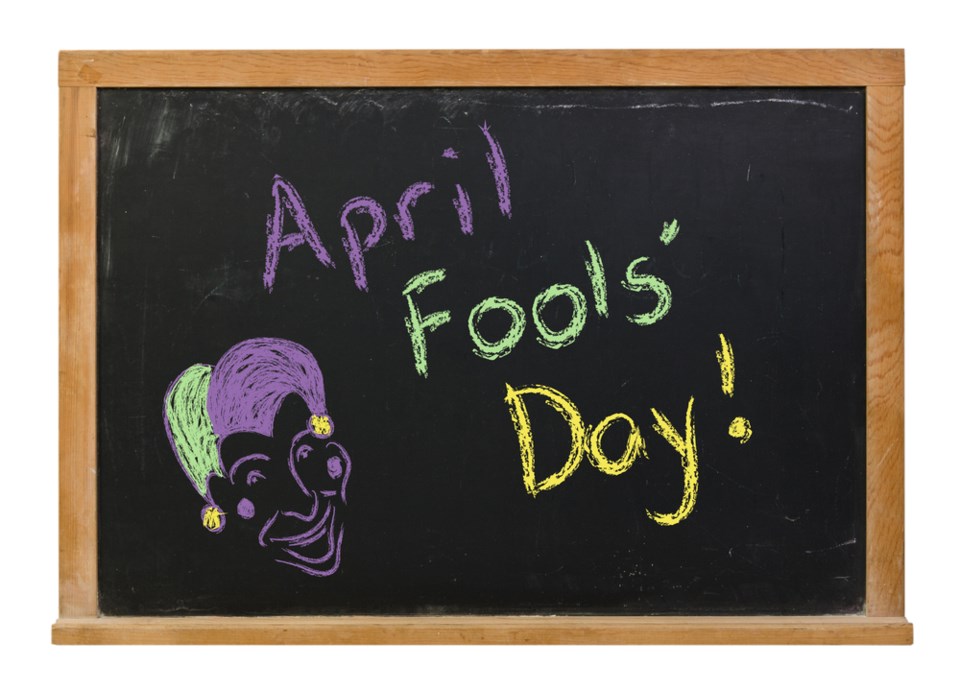While it is generally true that you probably shouldn’t believe everything you read online, you should be particularly wary on April 1. Monday is April Fool’s Day, and you can be sure there will be a lot of false headlines and harmless pranks getting shared on social media. This week, we look at the tradition and its pranks.
Origins
No one is entirely sure when or where April Fool’s Day began. Some suggest it is related to France switching from the Julian to the Gregorian calendar in 1582. Under the old system, the New Year was celebrated between March 25 and April 1. Those on the new calendar began to mock others who were still celebrating on April 1.
It is also thought April Fool’s may have a connection to the ancient Roman festival Hilaria, which was a celebration in honour of Cybele, the mother of the gods. The day, which coincided with the spring equinox, included lots of fun activities. In particular, people would dress up in costumes and would mock one another.
Regardless, it appears as though April Fool’s Day has been observed for at least hundreds of years.
Hoaxes and Pranks
News organizations and big businesses love getting in on the fun each year. One of the most memorable April Fool’s pranks involved the BBC. Back in 1957 they aired a report that farmers in Sweden were enjoying a successful spaghetti harvest. The broadcast included images of farmers harvesting the noodles from “spaghetti trees.” The organization was then flooded with calls from viewers wanting to know where they could purchase such a tree.
The BBC was up to its old tricks again in 1965 when they announced they had created Smell-o-vision, which supposedly allowed for the transmission of odours. Some viewers called in to say the test had been successful. The stunt was repeated for online users in 2007 and Google paid homage to the prank in 2013 with its own version.
Here in Canada, in 2008 the CBC claimed the Royal Canadian Mint was replacing the $5 bill with a new $3 coin, dubbed the “threenie.”
Fast food companies love getting in on the fun, too. In 1996 Taco Bell announced they had purchased the Liberty Bell and were re-branding it as the Taco Liberty Bell. The company said the purchase would help reduce the country’s debt. Meanwhile, in 1998 Burger King announced they were releasing a new “left-handed” version of the Whopper, with all condiments shifted 180 degrees. Not to be outdone, in 2017 McDonald’s announced they were releasing the “Micro Mac.” It promised the same great taste of the popular Big Mac — at 1/48 the size. Hopefully, few people fell for these pranks.
Some Headlines are Real
Unfortunately, real news happens on April 1 and sometimes this news gets ignored because people believe it is an April Fool’s Day hoax. A tragic example of this dates back to 1946, when warnings of a tsunami went unnoticed. A total of 165 died in Hawaii and Alaska as a result.
A less serious example is when Google launched its Gmail service on April 1, 2004. Most people assumed that, because it was a free email service with 1 GB of storage (which was unheard of at the time), it had to be a prank.
There have been a number of noteworthy events take place on April 1. Some examples include:
- Apple Inc. is formed by Steve Jobs, Steve Wozniak, and Ronald Wayne (1976)
- Nunavut becomes a territory of Canada (1999)
- Same-sex marriage is legalized in the Netherlands, the first country to do so (2001)
…Thanks for all the Fish
In French culture April Fool’s Day looks a little bit different. Traditionally, children will attempt to sneak up behind an unwitting victim in order to attach a paper fish to their backs. Once successful, they shout “poisson d’avril!”
Why fish? Once again, the origins of this tradition are unclear. It may relate to the Easter season; during Lenten fasting, consuming meat is not allowed, but eating fish is acceptable. Thus, it was not uncommon to present fish as a gift.
Celebrate Early
In the U.K. (and in Canada) April Fool’s Day is supposed to end at noon. Those who continue to prank others beyond this are said to be the ones acting foolish. This deadline may trace its origins to Shig-Shag day, which was a 17th century celebration during which participants showed loyalty to the monarchy by putting oak sprigs in their hats. Those who did not participate could only be teased until noon.
Regardless, get you pranks in early!




